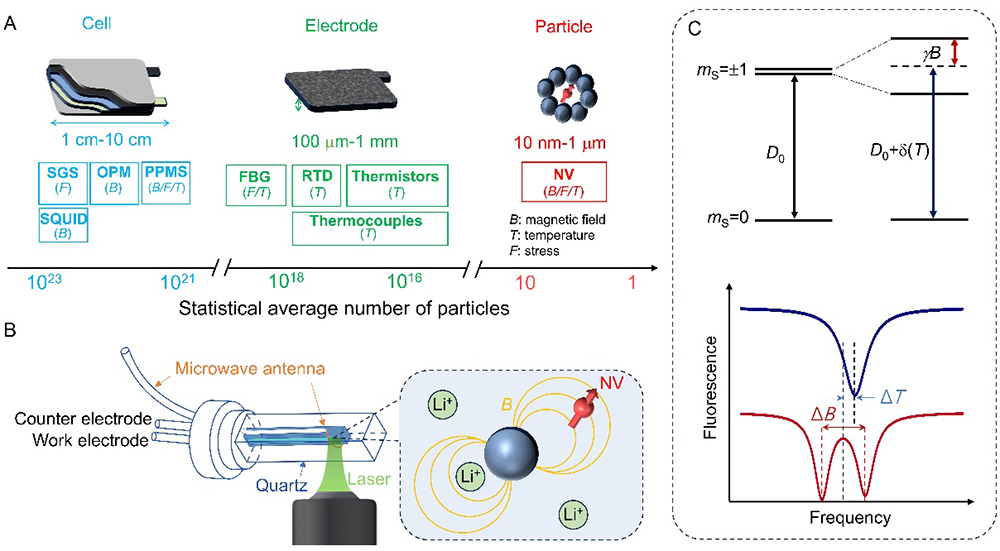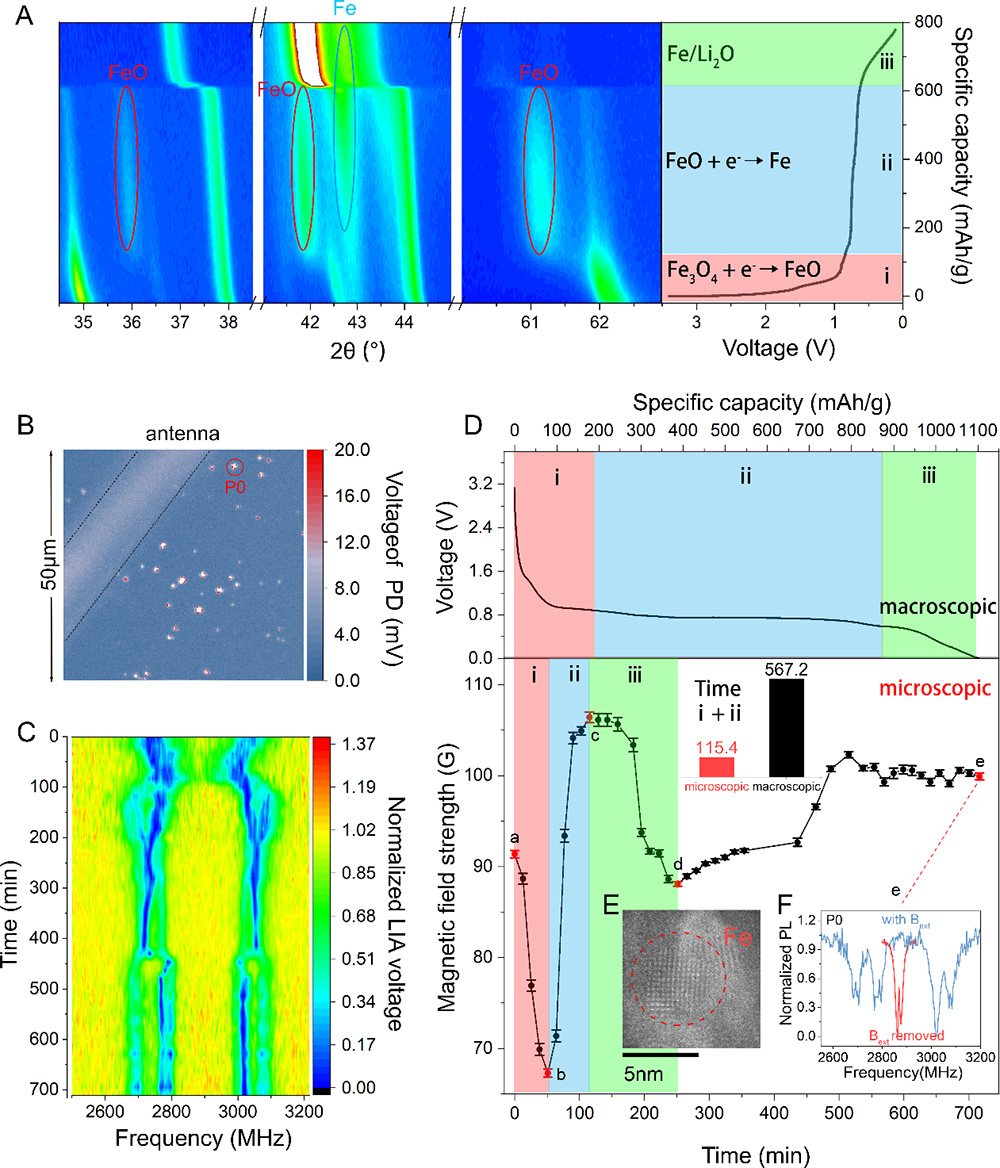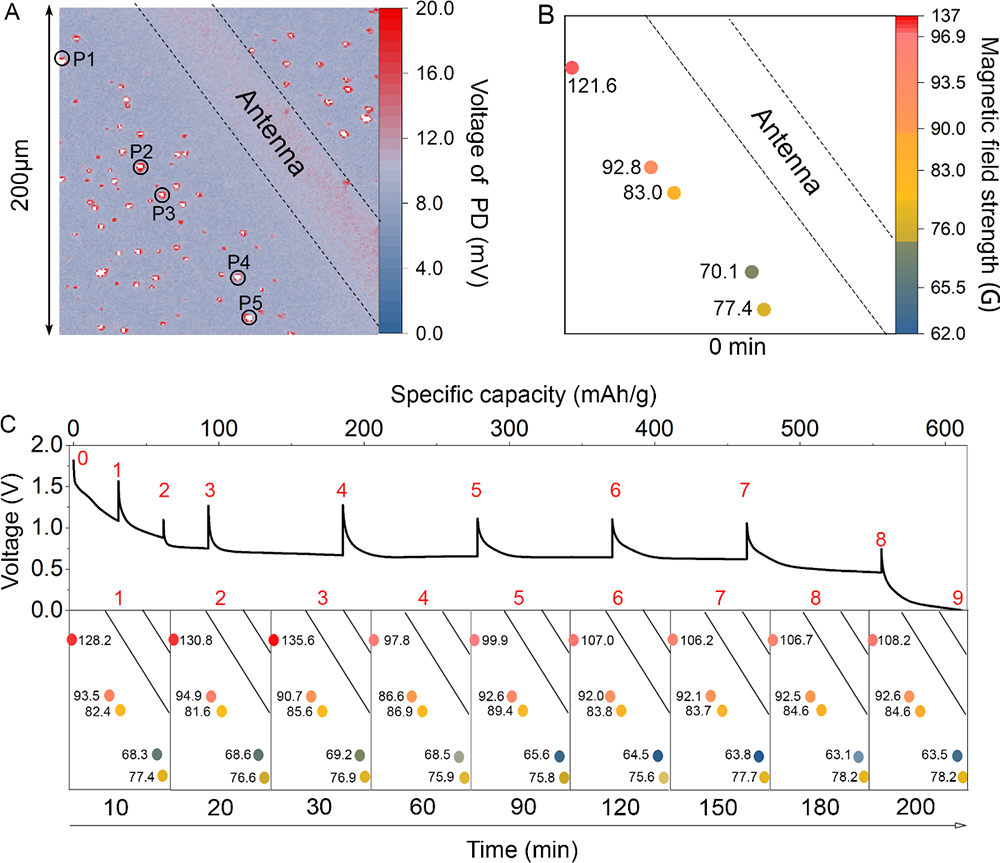Operando quantum sensing captures the nanoscale electrochemical evolution in battery
Date:12-09-2024 Print
Massive, diverse electrode particles are the minimum functional unit that integrates batteries, and their failure and non-uniformity significantly affect battery performance. In-situ sensing of the active material at the nanoscale region is critical for understanding reaction mechanisms, exploring failure mechanisms, developing battery life-extending technologies, and predicting battery lifespan. However, due to the lack of real-time, in-situ, and non-destructive sensing methods with sufficient spatial resolution and sensitivity, capturing the real-time physical quantities variations corresponding to electrochemical evolution at the single-particle level remains impractical. Furthermore, even though nano-scale-level resolution sensing is achievable, another drawback arises: the detection area of high-resolution sensing is usually tiny, limiting comprehensive data collection. Therefore, achieving wide-area and high-resolution sensing within battery electrodes is a significant challenge with great meaning.
To address these challenges in battery sensing, Liumin SUO’s team and Gangqin LIU’s team from the Institute of Physics, Chinese Academy of Science (IOP-CAS), proposed a quantum sensing methodology based on diamond NV centers for in-situ, non-destructive characterization of batteries. Diamond NV centers have extremely high spatial resolution ranging from 1nm to 1μm, are highly sensitive to variations in critical physical quantities such as temperature, stress, and magnetic fields, and can conduct multithreaded sensing benefiting from wireless information transfer, thus having great potential to solve the challenge perfectly. The team designed an integrated in-situ device combining the quantum detection system and the battery. Utilizing the integrated device, the team monitored the variation of physical properties of individual active material particles and distribution in situ. The feasibility was first demonstrated through in-situ magnetic field detection of Fe3O4 electrodes, revealing its phase transformation from Fe3O4 to FeO and finally to Fe during discharge. They discovered that the electrode does not undergo a uniform phase transformation, with significant microscopic reaction kinetic differences across regions. Moreover, they also identified the superparamagnetic behavior of Fe particles as reaction products. Besides, magnetic field and temperature distribution across the electrode were enabled by multithreaded sensing, which realized large-area, high-resolution, and non-destructive characterization. The results show significant distribution differences in magnetic field and thermal conductivity due to the diversity of active materials, carbon conductive networks, and binders in the electrode, revealing the great potential of the NV centers as quantum probes for batteries in future.
This study entitled “Operando quantum sensing captures the nanoscale electrochemical evolution in battery” was published on Device.
This research was supported by the Ministry of Science and Technology, the National Natural Science Foundation of China, the Chinese Academy of Science, the Beijing Natural Science Foundation, and the Clean Energy Beijing Innovation Center.

Fig.1 Schematic of the operando quantum sensing for the battery.(Image by Institute of Physics)

Fig.2 Diamond quantum sensors capture the nanoscale electrochemical evolution of the Fe3O4 electrode. (Image by Institute of Physics)

Fig.3 Magnetic field mapping inside the Fe3O4 electrode. (Image by Institute of Physics)
Contact:
Institute of Physics
SUO Liumin
Email:suoliumin@iphy.ac.cn
Key words:
Quantum sensing; Battery; Diamond NV center; In-situ non-destructive characterization; Multithreaded sensing;
Abstract:
In-situ nanoscale physical quantities monitoring within electrodes while battery operation and wide-area physical quantities mapping are achieved through multithreaded quantum sensing technologies based on diamond NV centers.

